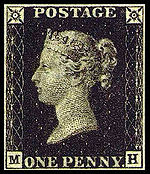Indian National Army ('Azad Hind Fauz' in Hindi) was founded by Netaji ("Leader" in English) Subhash Chandra Bose, in October 1943 upon re-organizing the previously existing Indian Independence League in Japan and taking the charge from Ras Bihari Bose, under the patronage of Imperial Kingdom of Japan.
Indian National Army formed the Provisional Govt. of Free India and almost immediately declared war against the United Kingdom and USA.The primary objective of Indian National Army was to politically free India from British rule with military and moral support from Imperial Kingdom of Japan and the Nazi Germany.Although Indian National Army gained hugh recognition from Axis powers, head of other states like Croatia,Thailand, Burma, Philippines and Ireland also sent their congratulatory notes to the INA and the Provisional Govt. of Free India.
Indian National Armyand Provisional Govt. of Free India issued a set of 10 stamps with "AZAD HIND" inscribed on it along with a Rangoon (former capital of Myanmar) type issued stamp with "CHALO DELHI" ('Let march to Delhi' in Hindi) inscribed.
The set of ten stamps with Azad Hind inscribed were produced in Germany during Second World War.
Its worthwhile to note that these 10 stamps sharing six different designs could never do any postal duty.
I have six of these Azad Hind stamps (imperforated) as part of my collection, which are as follows :-
.jpg) |
| Azad Hind Fauz Stamps (My collection)-6 out of 10 original produced |
Happy Collecting :)
References
- Stanley Gibbons Stamp Catalogue on India, Pp. 142 under head "INDIAN NATIONAL ARMY'.
- http://en.wikipedia.org/wiki/Azad_Hind
-2.jpg)








